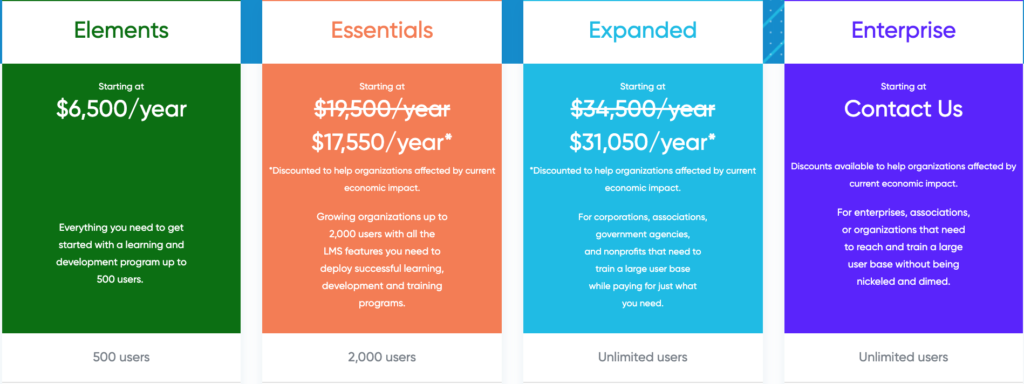When it comes to selecting the right Learning Management System (LMS) for your organization, you want to make an informed decision by comparing the features and costs of different options available in the market. This featured post aims to provide you with valuable tips on how to navigate through this process efficiently. By maintaining a third-person perspective and using inclusive language, we will delve into the critical factors that should be considered when comparing LMS options.
1. Researching LMS Features
To begin with, one should conduct thorough research on LMS features offered by various providers or vendors in the market. For instance, you must know about Thinkific pricing if you are considering this platform.
Other important features to consider may include user management, course creation and management tools, content delivery capabilities, reporting and analytics options, mobile accessibility, integration possibilities with other tools or platforms used within the organization’s ecosystem, scalability options, and ease of use. By considering these factors, organizations can ensure that they find an LMS that suits their specific training needs.
2. Budgeting
In addition to researching features offered by different LMS providers/vendors, organizations must also establish a budget for their LMS implementation project. The budget should encompass aspects such as licensing or subscription fees, customization costs if needed, ongoing technical support charges if not included in the initial purchase price package being offered by vendors/providers, and installation expenses if required for on-premise solutions instead of cloud-based ones.
3. Identifying Must-Have Features
Once organizations have researched available LMS features and established a budget range for their selection process parameters, they should proceed to identify “must-have” features unique to their requirements. These are elements that would significantly and positively impact the organization’s training goals and effectiveness. Pinpointing these key requirements in advance will help weed out any LMS contenders from your shortlisted options that cannot meet these critical feature expectations.
4. Prioritize Long-Term Value over Immediate Costs
While it may be tempting for organizations to lean solely toward more affordable or budget-friendly options, it’s crucial not to compromise on LMS quality or features necessary for long-term training objectives. It is suggested that assimilating current and anticipated future training requirements in the decision-making process would be more rewarding than focusing solely on short-term financial aspects.
5. Seek Demos and Trial Periods
To gain a clearer understanding of an LMS’s overall interface, ease of use, and available functionalities on your shortlist, request demos or trial periods from the respective vendors/providers. This allows you to explore how the LMS will align with your organization’s workflow and employee experience without making a commitment upfront.
6. Assess Support Services
It is vital to evaluate the support services provided by different LMS providers/vendors as part of the comparison process. Look for what kinds of support they offer (e.g., email, phone, chat), their response times, and the availability of online knowledge bases or forums for self-help resources if required frequently by your organization’s users. By ensuring that timely assistance is available when required, organizations can minimize any disruptions in their training program caused by technical or operational issues.
7. Consider Scalability & Growth
Organizations should assess whether an LMS can match their growth trajectories and remain scalable with increased user requirements over time. The initially selected system should have enough bandwidth to encompass added users if headcounts grow significantly in the future or when expanded training programs require efficient management.
Conclusion
When choosing an LMS as a tool to enhance learning within your organization, comparing various options ensures that you find an option catered specifically to your requirements. By conducting comprehensive research regarding features offered by different providers/vendors and identifying must-have functionalities unique to your organization’s training needs while keeping long-term value and scalability in perspective, you can make a well-informed decision leading to enhanced employee learning experiences.
Remember to request demos or trial periods directly from vendors/providers for hands-on evaluations before committing fully. Finally, the support services available from different providers/vendors should be assessed, as LMS implementations can occasionally come with unexpected roadblocks requiring efficient and effective resolution. By incorporating these tips into your decision-making process, you guarantee a successful selection and implementation of a fitting LMS for your organization’s training goals.


